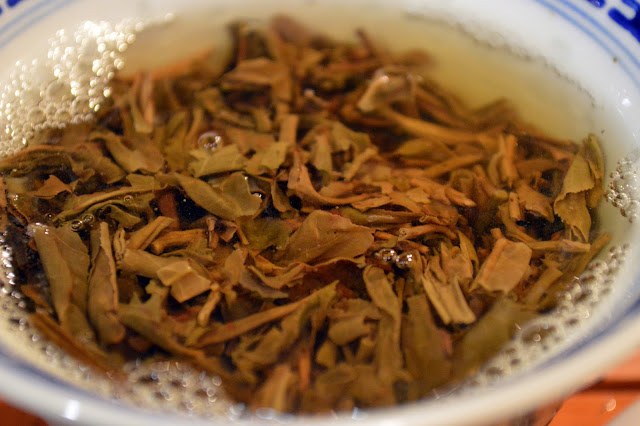We are well into 2016, and I thought it would be interesting for some people to review - have a discussion - about how much tea they bought over the course of 2015. There are three types/levels of tea buyers I run into on the web, and they can generally be pinned into the basic categories of: 1) personal enthusiast/connoisseur, 2) tea lover and buyer for a cafe or restaurant, and 3) a tea wholesaler or entrepreneur generally selling on the web. I fit into category #2, and although I participate in various forums and other tea related discussions, I don't encounter many other people who also fall into category #2. Most seems to be in categories #1 and #3, which is fine, if you are in #2 like me, you probably have a ton of other things to do like run your cafe or restaurant. However, to put out some numbers for discussion and to help those who may be interested in starting a cafe, tea house, or restaurant, here are the teas and amounts that I bought last year.
 |
| Top half of current teas on offer |
Chinese White: 10 pounds
Chinese Green: 139 pounds
Chinese Oolong: 25 pounds
Chinese Black: 64 pounds
Chinese Post-Fermented: 69 pounds
Indian White: 4 pounds
Indian Green: 1 pound
Indian Oolong: 0
Indian Black: 144 pounds
Taiwan White: 0
Taiwan Green: 0
Taiwan Oolong: 32 pounds
Taiwan Black: 0
Japanese White: 0
Japanese Green: 54 pounds
Japanese Oolong: 0
Japanese Black: 0
Total: 542 pounds of tea in 2015
 |
| Bottom half of current teas on offer |
That seems like a fairly decent amount of tea for one year, but I don't know. Perhaps it is low, perhaps it is high. Tough to say without any numbers out there. In comparison to the amount of coffee we bought last year, it is 10 to 1, i.e., we bought over 5,400 pounds of coffee.
This year I plan on buying a bit more, as we continue to grow and sell more tea and coffee. It is an uphill battle, as there is so much out there in terms of coffee education, coffee events, coffee support, and so forth, whereas with tea, there is very little. The largest gap that I see in the tea market in the U.S. is simply educating consumers about quality tea on all levels. If you are interested in learning more about tea, it can be a long journey depending on where you live and how much money you have, whereas with coffee, it is easy to find a high quality roaster or cafe within 1 hour drive of almost anywhere (except for some areas that are simply to rural to sustain that type of business).
To my mind, cafes are the best place to grow tea culture and tea appreciation in the U.S., far beyond online efforts, trade fairs, or specialty classes. Cafes are where people can learn about tea without being put-off by it's mystery; you can go to a cafe and try a tea while your friend gets a Americano or some other familiar drink. It is the perfect spot to relax and to be open to learning and trying new things. When I travel, I always go to the local cafes and try both the coffee and any tea if it is available, but I am always struck by how tea is treated as a side project of the cafe or not included at all.
I hope to meet other people in category #2 (as well as #1 and #3) so that we can learn how to grow tea appreciation and tea culture in the U.S. If someone is traveling, I'd love to be able to tell them where to get an excellent pot or gaiwan of tea, but other than a few spots in San Francisco and one shop in Tucson, I can't say much. If you are out there, I'd love to hear from you, it's a long journey and I'm always looking for friendly faces to share the adventure with.










